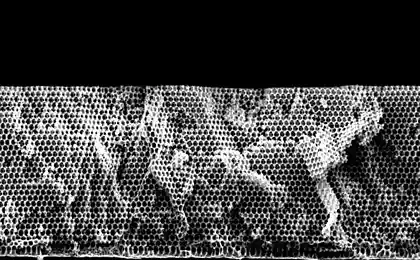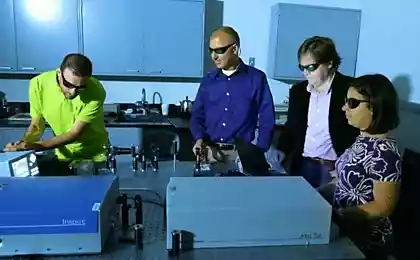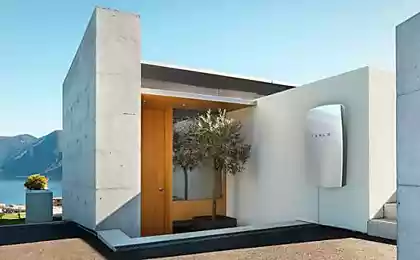756
California chemists figured out how to make high-performance plastic solar panels

Example of polymer panels i>
Chemists from the University of California, предложили organization chart polymer solar cells, which increases their efficiency. system can store the accumulated charge does not microseconds as conventional polymer batteries, and in a few days. Inspired by scientists, of course, the example of nature.
Photosynthesis - the wonderful, complex and high-performance (in the case of chlorophyll) the process by which the world still live there. Plants in the course of evolution have learned to multi-stage technology of electric energy of the photons. At the same time the structure of the plant is such that the electron is separated from the received positively charged molecule and remains a divided with it. As a result, the charge is stored.
Engineers are trying to replace highly expensive silicon panels cheap polymer , but those have one flaw - their structure often leads to the fact that only that the resulting electron again reunited with the donor that reduces the coefficient of the photoelectric conversion panels. Типичный the coefficient of the polymeric panels is about 5%, while in silicon it reaches 25% and for multilayer structures made of various materials even more than 30%.
Previously, the engineers did not know how to give a polymer panels more efficient structure. Standard plastic panels resemble well-mixed mess of long polymer molecules spaghetti and meatballs-fullerenes. The polymers act as donors, acceptors, electrons passing fullerenes, but they often "jump" back without stopping at acceptors.

Spaghetti Monster knows what is at stake i>
Now the Californian chemists have suggested a way to put things in the right order in the structure. In manufacturing process for panels in their neat polymer lumps spaghetti contained within several meatballs, fullerenes, while the other fullerenes surround the lumps out. The electron first falls to the inner fullerenes from which goes to the outside where it can be related to several days or even weeks. This greatly increases the efficiency of the panels.
Moreover, for the assembly of such panels are not required toxic solutions - they can be collected in ordinary water. A simplified assembly process much - enough, according to chemists simply "throw all prepared materials in the water, and they will gather in the desired structure themselves." Now chemists are working on the process of making the actual solar panels based on this technology.
Source: geektimes.ru/post/252280/























